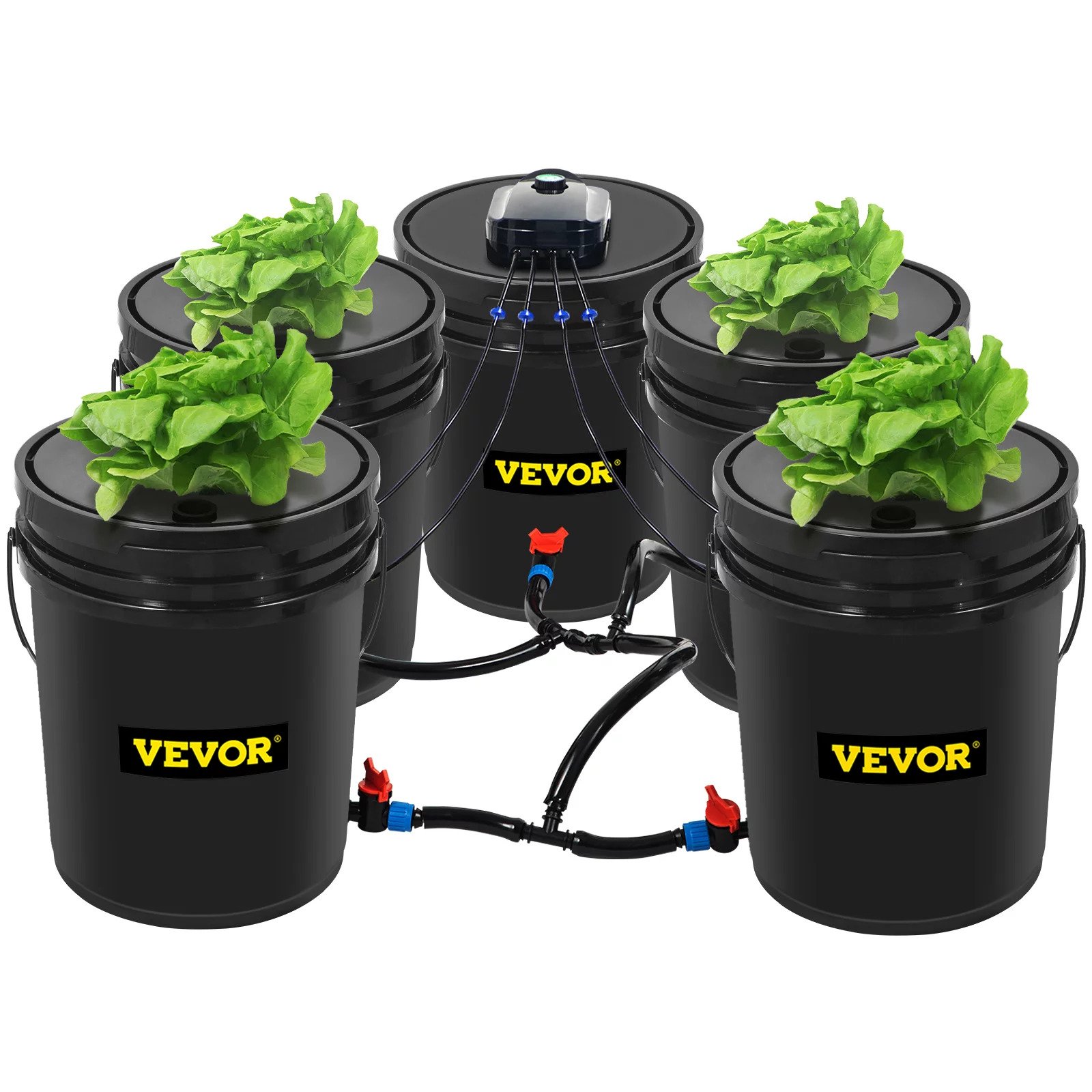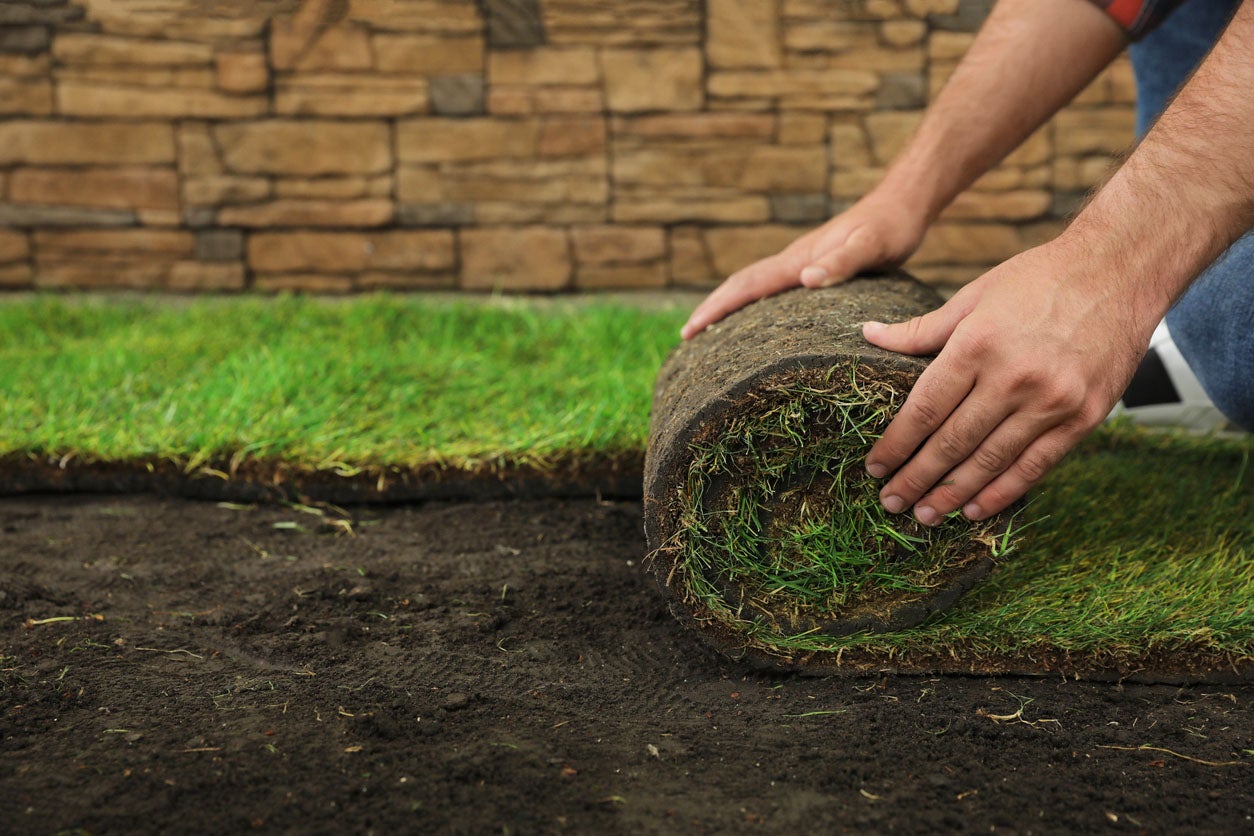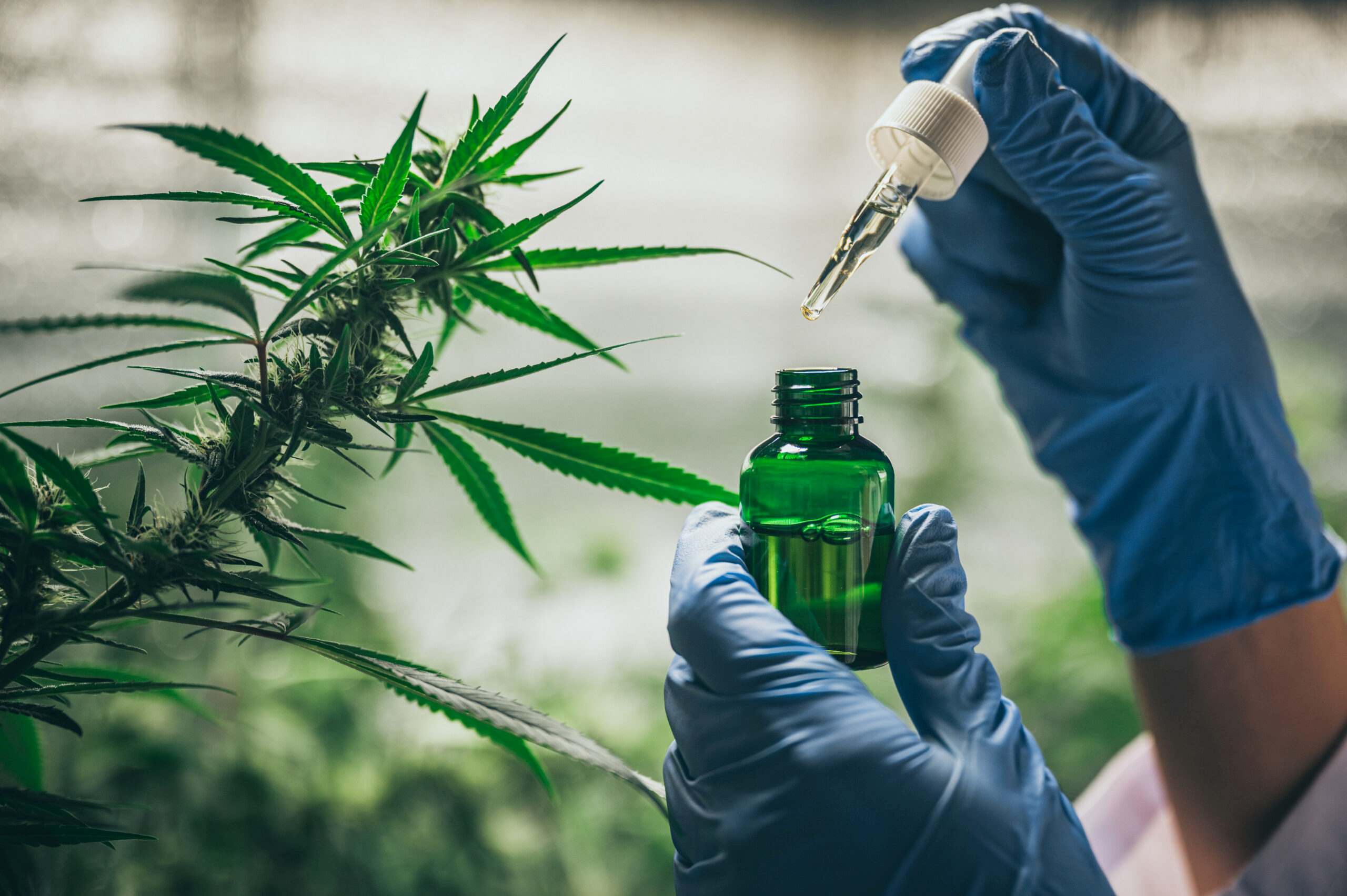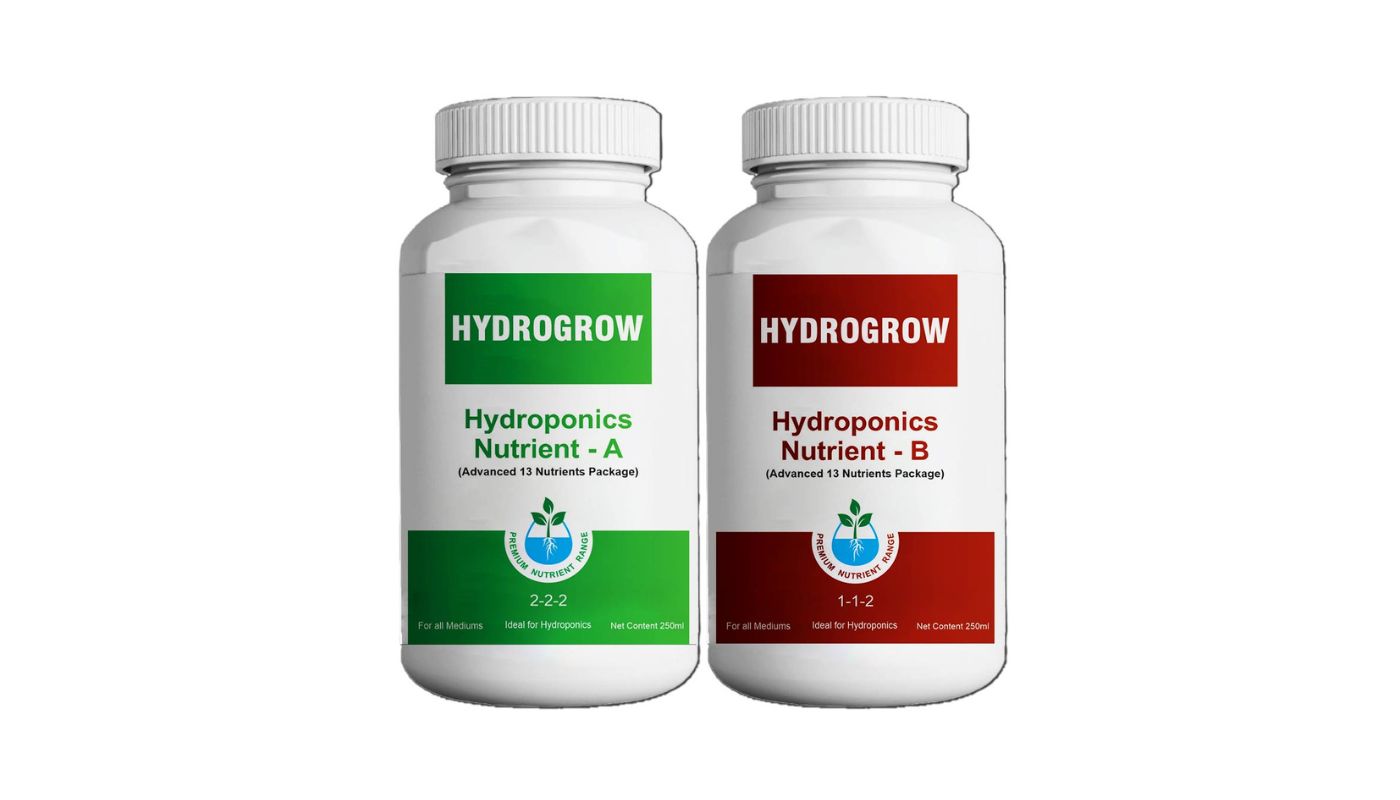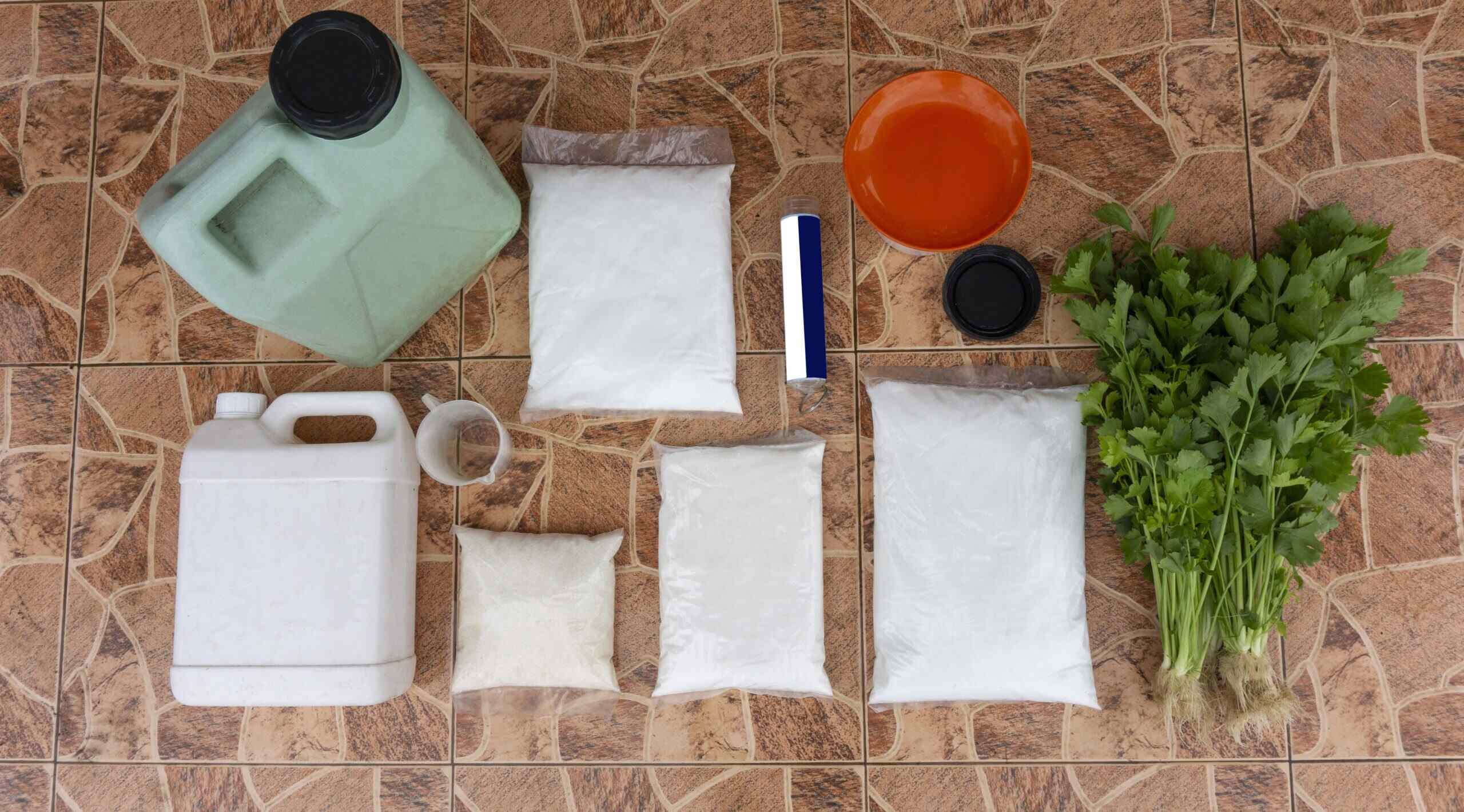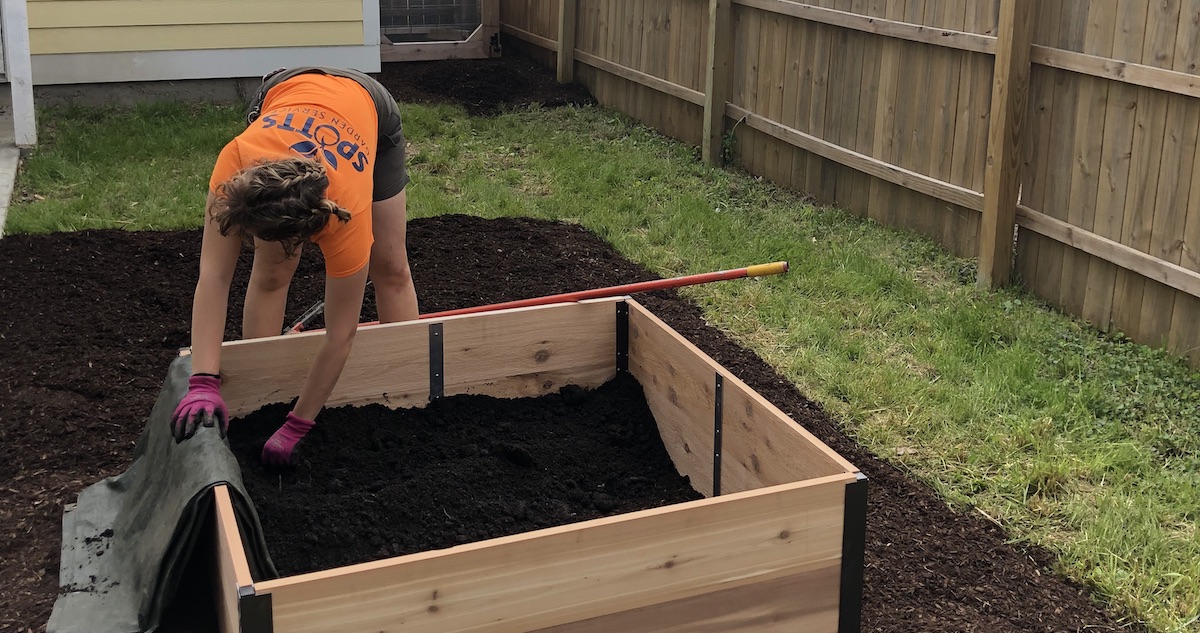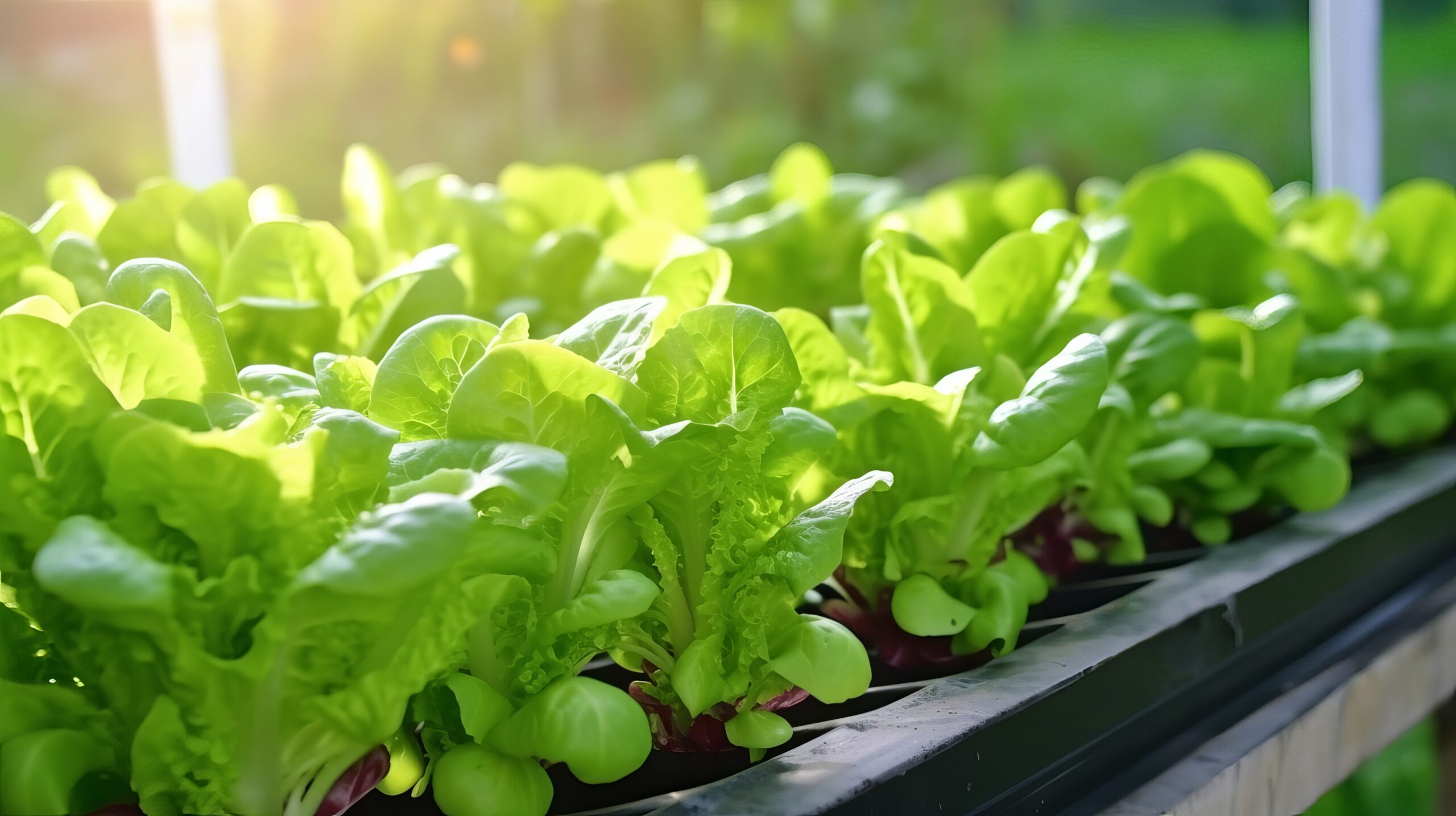Home>Gardening Tips and Tricks>Eco-Friendly Gardening>What Nutrients Do I Need For Hydroponics


Eco-Friendly Gardening
What Nutrients Do I Need For Hydroponics
Modified: January 22, 2024
Learn about the essential nutrients required for eco-friendly hydroponics gardening. Discover how to optimize plant growth and productivity for sustainable farming.
(Many of the links in this article redirect to a specific reviewed product. Your purchase of these products through affiliate links helps to generate commission for Chicagolandgardening.com, at no extra cost. Learn more)
Table of Contents
Introduction
Welcome to the world of hydroponics! If you’re looking for an innovative and eco-friendly way to garden, then hydroponics is the answer. Gone are the days of traditional soil-based gardening, as hydroponics offers a soil-less alternative that allows plants to thrive by directly receiving the necessary nutrients through a water-based solution. This method not only conserves water but also maximizes space utilization, making it an ideal choice for urban dwellers or individuals with limited gardening space.
Hydroponics is a technique that has gained popularity in recent years due to its numerous benefits. By cultivating plants in a controlled environment, gardeners can achieve faster growth rates, higher yields, and superior quality produce. Additionally, hydroponics eliminates the risk of soil-borne diseases and pests, leading to healthier plants and reduced need for chemical pesticides.
Whether you’re a seasoned gardener or just starting out, understanding the key components of hydroponics is crucial for success. In this article, we will explore the essential nutrients required for hydroponics and how to maintain optimal nutrient levels to ensure your plants thrive.
Understanding Hydroponics
Hydroponics is a method of gardening that involves growing plants in a nutrient-rich water solution, without the use of soil. Instead of relying on soil to provide nutrients, hydroponic systems deliver essential nutrients directly to the plant roots.
There are several different types of hydroponic systems, including the nutrient film technique (NFT), deep water culture (DWC), and aeroponics. Each system has its own unique way of delivering water and nutrients to the plants, but they all share the same principle of soil-less cultivation.
One of the main advantages of hydroponics is the ability to control the growing environment. By carefully monitoring factors such as temperature, humidity, and light levels, hydroponic gardeners can create the optimal conditions for plant growth. This level of control allows for year-round gardening and the ability to grow crops that may not thrive in traditional soil-based gardens.
Hydroponics also offers a water-saving advantage over traditional gardening methods. The recirculating systems used in hydroponics allow for the reuse of water, minimizing water waste. In fact, hydroponic systems use up to 90% less water compared to traditional soil-based gardening.
Another benefit of hydroponics is the ability to grow plants vertically, making it an efficient use of space. This is especially advantageous for those with limited garden space or who live in urban areas. Vertical hydroponic systems can be set up on walls or in stacked trays, maximizing the number of plants that can be grown in a small area.
Overall, hydroponics is a sustainable and efficient method of gardening that offers numerous advantages over traditional soil-based cultivation. By understanding the principles of hydroponics and how it works, you can create an optimal growing environment for your plants and enjoy the benefits of year-round gardening and higher yields.
Essential Nutrients for Hydroponics
In order for plants to thrive in a hydroponic system, it is essential to provide them with the necessary nutrients they need to grow and develop. These nutrients can be divided into two categories: macronutrients and micronutrients.
Macronutrients are the primary nutrients that plants require in larger quantities. They include nitrogen (N), phosphorus (P), potassium (K), calcium (Ca), magnesium (Mg), and sulfur (S). These macronutrients play a crucial role in various plant functions, such as photosynthesis, root development, and overall growth.
Nitrogen is essential for leafy green growth and is responsible for the vibrant green color of plants. Phosphorus is crucial for root development, flowering, and fruit production. Potassium helps in the overall health and vigor of the plant and aids in disease resistance. Calcium is necessary for cell wall development and the prevention of diseases like blossom end rot. Magnesium is an integral component of chlorophyll and is vital for photosynthesis. Sulfur is essential for protein synthesis and is involved in various enzymatic processes.
Micronutrients, on the other hand, are required in smaller quantities but are equally important for the well-being of plants. These include iron (Fe), manganese (Mn), zinc (Zn), copper (Cu), molybdenum (Mo), boron (B), and chlorine (Cl). These micronutrients assist in processes such as enzyme activation, chlorophyll synthesis, and overall plant metabolism.
Providing the right balance of these nutrients is crucial for optimal plant growth. One common method of supplying these nutrients is through the use of a nutrient solution, which contains a carefully measured mixture of macronutrients and micronutrients. This solution is delivered directly to the plant roots in a hydroponic system, allowing the plants to absorb the nutrients they need.
It is important to note that the nutrient requirements of plants may vary depending on the stage of growth, the type of crop, and the specific hydroponic system being used. Regular testing of the nutrient levels in the solution is necessary to ensure that the plants are receiving the correct ratios of nutrients. This can be achieved through the use of a quality nutrient monitoring system or by sending water samples to a lab for analysis.
By understanding the essential macronutrients and micronutrients required for hydroponics and maintaining the proper nutrient balance, you can ensure that your plants receive the necessary elements for healthy growth and high yields.
Macronutrients
Macronutrients are vital elements that plants require in large quantities for proper growth and development in a hydroponic system. Understanding the role of each macronutrient is essential for maintaining healthy plants and maximizing yields.
Nitrogen (N): Nitrogen is a key component involved in the production of proteins, enzymes, and chlorophyll. It promotes lush vegetative growth and vibrant green foliage. Nitrogen deficiency can lead to stunted growth and pale leaves.
Phosphorus (P): Phosphorus is critical for energy transfer, root development, and the production of flowers and fruits. It promotes healthy root growth and enhances overall plant vigor. Phosphorus deficiency can result in poor flowering or fruiting and weak root systems.
Potassium (K): Potassium is responsible for various crucial plant functions, including enzyme activation, water movement, and disease resistance. It helps plants withstand environmental stresses and contributes to overall plant health. Potassium deficiency can lead to weak stems, decreased fruit quality, and increased susceptibility to diseases.
Calcium (Ca): Calcium is essential for cell wall development and provides strength and structure to plant tissues. It helps prevent disorders such as blossom end rot in tomatoes and tip burn in lettuce. Calcium deficiency can lead to weakened cell walls and poor overall plant health.
Magnesium (Mg): Magnesium is a central component of chlorophyll and is vital for photosynthesis. It plays a crucial role in the production of energy-rich compounds and the metabolism of other nutrients. Magnesium deficiency can result in yellowing leaves and reduced photosynthesis.
Sulfur (S): Sulfur is essential for protein synthesis and is involved in the production of vitamins and enzymes. It plays a significant role in the overall growth and development of plants. Sulfur deficiency can result in yellowing of leaves and reduced plant vigor.
While macronutrients play a critical role in plant growth, it is important to maintain a balanced ratio among them. Each macronutrient serves a specific purpose, and an excess or deficiency in one can impact the availability and uptake of others. It is recommended to follow the guidelines provided by nutrient manufacturers or consult with a hydroponic specialist to determine the appropriate macronutrient levels for your specific plants and growth stage.
Regular monitoring of nutrient levels in your hydroponic system is crucial to ensure that plants receive the optimal macronutrient balance. Testing the nutrient solution and adjusting the levels accordingly will help maintain healthy plant growth and maximize the potential of your hydroponic garden.
Micronutrients
Micronutrients are essential elements that plants require in smaller quantities but play a crucial role in their growth and development within a hydroponic system. Each micronutrient has specific functions in various metabolic processes and ensures the overall health and productivity of plants.
Iron (Fe): Iron is involved in chlorophyll synthesis, which is essential for photosynthesis. It is also required for electron transport and enzyme functions. Iron deficiency can result in yellowing leaves with green veins.
Manganese (Mn): Manganese aids in enzyme activation and is involved in nitrogen metabolism and photosynthesis. It plays a role in lignin synthesis, which contributes to plant structure. Manganese deficiency can lead to yellowing and mottling of leaves.
Zinc (Zn): Zinc is involved in enzyme functions, hormone production, and photosynthesis. It assists in the synthesis of proteins and carbohydrates. Zinc deficiency can cause stunted growth and malformed leaves.
Copper (Cu): Copper is essential for enzyme activation and the metabolism of carbohydrates and proteins. It plays a role in plant defense mechanisms and the synthesis of lignin. Copper deficiency can result in leaf discoloration and reduced plant growth.
Molybdenum (Mo): Molybdenum is necessary for nitrogen fixation and the conversion of nitrate to ammonia, which is used in protein synthesis. It is also involved in enzyme functions related to nitrogen metabolism. Molybdenum deficiency can lead to stunted growth and yellowing of leaves.
Boron (B): Boron is important for cell wall synthesis, pollen development, and fruit set. It aids in calcium uptake and is involved in carbohydrate translocation. Boron deficiency can cause hollow fruit or poor fruit development.
Chlorine (Cl): Chlorine is involved in photosynthesis and ionic balance within plant cells. It plays a role in stomatal regulation and water movement. Chlorine deficiency is rare, but it can lead to reduced yield and poor growth.
Providing a balanced supply of micronutrients is crucial for the overall health and productivity of plants in a hydroponic system. While they are required in smaller quantities, deficiency or excess of any micronutrient can lead to significant growth problems and yield reduction. Regular testing of the nutrient solution and adjustment of micronutrient levels based on the specific needs of the plants will help maintain optimal growth and prevent deficiencies or toxicities.
It’s important to note that micronutrient requirements can vary depending on the crop type, growth stage, and specific hydroponic system being used. Consulting with a knowledgeable hydroponics specialist and following recommended guidelines from nutrient manufacturers will ensure that your plants receive the proper balance and availability of micronutrients for optimal growth and development.
Importance of pH in Hydroponics
pH is a crucial factor to consider in hydroponics as it directly affects the availability and uptake of nutrients by plants. The pH scale measures the acidity or alkalinity of a solution, with a pH of 7 being neutral. Maintaining the proper pH range is essential for optimal plant growth and nutrient absorption.
The pH level of a hydroponic system affects the solubility and accessibility of various nutrients. Most plants thrive in a slightly acidic to neutral pH range, typically between 5.5 and 6.5. In this range, the majority of essential nutrients are readily available for uptake by the plants’ roots. However, different crops may have specific pH preferences, so it is important to research the ideal range for the plants you are growing.
The pH of a hydroponic system can be influenced by several factors, such as the nutrient solution, the water source, and the growing medium. Alkaline water or certain types of growing media, such as coco coir, can have an impact on the pH levels. Additionally, the nutrient solution itself may contain pH-altering compounds.
When the pH deviates from the optimal range, nutrient deficiencies or toxicities can occur. If the pH is too high (alkaline), certain nutrients, such as iron, manganese, and zinc, become less available to the plants, leading to deficiencies. On the other hand, if the pH is too low (acidic), it can result in nutrient imbalances and toxicities.
To maintain the proper pH level in a hydroponic system, regular monitoring is essential. pH meters or testing kits can be used to measure the pH of the nutrient solution. Depending on the reading, adjustments can be made by adding pH up or pH down solutions to bring the pH back into the desired range.
It is important to note that changes to the pH should be done gradually. Rapid pH adjustments can stress the plants and potentially lead to further nutrient imbalances. It is recommended to make incremental changes while monitoring the plants’ response to ensure they are not negatively affected.
In addition to monitoring pH, it is also important to maintain pH stability. Fluctuations in pH can impact nutrient availability and uptake, causing stress to the plants. Factors such as water quality, nutrient strength, and plant uptake can influence pH stability. Regular monitoring and adjustments, as needed, will help maintain a stable pH level in the hydroponic system.
By understanding and managing pH levels in a hydroponic system, you can ensure that your plants have optimal access to nutrients, promoting healthy growth and maximizing yields.
Nutrient Solutions for Hydroponics
In hydroponics, nutrient solutions play a vital role in providing plants with the essential elements they need for growth. A nutrient solution is a carefully formulated blend of macronutrients, micronutrients, and other additives, dissolved in water, that is directly delivered to the plant roots in a hydroponic system.
There are different approaches to preparing nutrient solutions, including pre-mixed commercial solutions and custom formulations. Commercial nutrient solutions are readily available and can simplify the process for beginners, as they come in balanced ratios and are designed specifically for hydroponic systems. These solutions are often labeled with the appropriate ratios of macronutrients and micronutrients and provide clear instructions for dilution and application.
Custom nutrient solutions involve the precise measurement and blending of individual nutrient compounds to create a tailored formula for specific plant requirements. This method allows for more control over nutrient ratios and can be beneficial for experienced gardeners who want to fine-tune their nutrient solution based on the specific needs of their plants.
When preparing or selecting a nutrient solution, it is important to consider the crop type, growth stage, and specific hydroponic system being used. Different plants have varying nutrient requirements, so it is crucial to research and consult reliable sources to determine the appropriate nutrient ratios for your specific crops.
In addition to the macronutrients and micronutrients, nutrient solutions may also include supplemental additives such as root stimulants, beneficial microbes, or organic supplements. These additives can enhance plant growth, root development, and overall plant health.
Preparing and maintaining a nutrient solution requires regular monitoring and adjustment. As plants take up nutrients, the nutrient solution can become depleted, leading to imbalances or deficiencies. It is important to regularly test the pH and nutrient levels of the solution and make any necessary adjustments to maintain optimal nutrient concentrations and pH balance.
Proper storage and handling of nutrient solutions are also important. Nutrient solutions should be kept in clean, well-sealed containers to prevent contamination and degradation. It is recommended to store nutrient solutions in a cool, dark place away from direct sunlight.
Overall, nutrient solutions are a crucial component of successful hydroponic gardening. They provide plants with the necessary nutrients they need to thrive and yield high-quality produce. Whether using commercial solutions or custom formulations, regular monitoring and adjustment of the nutrient solution will help ensure optimal plant growth and maximize the potential of your hydroponic system.
Testing and Adjusting Nutrient Levels
In hydroponics, maintaining the proper nutrient levels is crucial for healthy plant growth and optimal yields. Regular testing and adjustment of nutrient levels ensure that plants are receiving the right balance of macronutrients and micronutrients. Here are some key steps to effectively test and adjust nutrient levels in a hydroponic system.
1. Conduct pH Testing: pH testing is the first step in determining the acidity or alkalinity of the nutrient solution. Use a pH meter or testing kit to measure the pH level. The optimal pH range for hydroponic plants is typically between 5.5 and 6.5, but it may vary depending on the specific crop. If the pH is outside the desired range, adjustments can be made using pH up or pH down solutions.
2. Test Electrical Conductivity (EC): EC measures the concentration of dissolved salts in the nutrient solution. It indicates the overall nutrient strength and helps assess whether the plants are receiving adequate nutrition. A high EC level may indicate excessive nutrient concentration, while a low EC level may suggest nutrient deficiency. Adjustments can be made by adding more nutrient solution or diluting the existing solution accordingly.
3. Monitor Nutrient Ratios: It is essential to monitor the nutrient ratios in the solution to ensure that plants receive the proper balance of macronutrients and micronutrients. Regularly test for the presence and concentration of essential elements using a nutrient testing kit or by sending samples to a laboratory for analysis. Adjustments can be made by adding specific nutrients or adjusting the overall nutrient solution accordingly.
4. Keep Records: Maintaining detailed records of nutrient levels, pH readings, and adjustments made is crucial for tracking the progress of the plants and making informed decisions. By keeping accurate records, you can identify patterns, troubleshoot issues, and make precise adjustments based on the specific plant requirements.
5. Adjustments Gradually: It is important to make any necessary adjustments to the nutrient solution gradually. Sudden or drastic changes can shock the plants and lead to stress or nutrient imbalances. Make incremental adjustments over time, allowing the plants to adapt and respond accordingly.
6. Regularly Monitor and Re-Test: Nutrient levels in hydroponic systems can fluctuate over time due to plant uptake, evaporation, or changes in water quality. Regularly monitor and re-test the nutrient solution to ensure that the levels remain within the desired range. Adjustments may be needed at different stages of plant growth or when environmental conditions change.
By regularly testing and adjusting nutrient levels in a hydroponic system, you can ensure that your plants receive the optimal nutrition they need for healthy growth and maximum yields. Monitoring pH, EC, nutrient ratios, and making adjustments as necessary will help create an ideal growing environment and promote successful hydroponic gardening.
Common Nutrient Deficiencies in Hydroponics
Nutrient deficiencies can occur in hydroponic systems when plants are not receiving an adequate supply of specific essential elements. Identifying and addressing nutrient deficiencies promptly is crucial for maintaining healthy plant growth and preventing yield loss. Here are some common nutrient deficiencies that may occur in hydroponics:
Nitrogen (N) Deficiency: Nitrogen deficiency is characterized by pale or yellowing leaves, especially in older foliage. Plants lacking nitrogen may have stunted growth and reduced overall vigor. To address nitrogen deficiency, it is important to increase the nitrogen content in the nutrient solution gradually.
Phosphorus (P) Deficiency: Phosphorus deficiency often manifests as dark green or purple leaves, particularly in younger foliage. Plants lacking phosphorus may exhibit poor root growth, delayed flowering, and reduced fruiting. Adding a phosphorus-rich fertilizer or adjusting the nutrient solution can help alleviate this deficiency.
Potassium (K) Deficiency: Potassium deficiency can result in yellowing or browning of leaf edges, as well as weak stems and poor overall growth. Plants lacking potassium may also become more susceptible to diseases and pests. Increasing the potassium content in the nutrient solution or using a potassium-rich supplement can mitigate this deficiency.
Calcium (Ca) Deficiency: Calcium deficiency often leads to irregular growth, weak stems, and blossom end rot in fruits or vegetables. It may also cause necrosis or tissue death in leaves or shoot tips. Calcium supplements or adjusting the nutrient solution can help rectify calcium deficiencies in hydroponic systems.
Magnesium (Mg) Deficiency: Magnesium deficiency is characterized by interveinal yellowing, where the veins of leaves remain green while the spaces in between turn yellow. Plants lacking magnesium may have reduced chlorophyll production and exhibit slower growth. Magnesium sulfate or Epsom salt can be used as a supplement to address this deficiency.
Micronutrient Deficiencies: Micronutrient deficiencies can manifest differently depending on the specific nutrient lacking. Iron (Fe) deficiency can cause yellowing between leaf veins, while manganese (Mn) deficiency leads to yellow or white spots on leaves. Zinc (Zn) deficiency can result in stunted growth and distorted leaves, and boron (B) deficiency may cause hollow or malformed fruits. Supplementation with micronutrient solutions or adjusting the nutrient solution composition can help correct these deficiencies.
Regular monitoring of plant health and nutrient levels is crucial for identifying and addressing nutrient deficiencies in hydroponics. Keeping a close eye on leaf color, growth patterns, and overall plant vitality will help catch deficiencies early on. By adjusting the nutrient solution, incorporating nutrient supplements, or modifying the nutrient ratios, you can ensure that your plants receive the essential elements they need for healthy growth and optimal productivity.
Conclusion
Hydroponics offers an innovative and eco-friendly approach to gardening, allowing plants to thrive in a soil-less system by directly providing essential nutrients through a carefully balanced nutrient solution. Understanding the importance of macronutrients, such as nitrogen, phosphorus, potassium, calcium, magnesium, and sulfur, as well as micronutrients like iron, manganese, zinc, copper, molybdenum, boron, and chlorine, is crucial for the success of a hydroponic garden.
Maintaining the proper pH level is essential for nutrient availability and uptake. Regular testing and adjustment of nutrient levels ensure that plants receive the right balance of elements, while monitoring the pH helps create an optimal growing environment. It is important to keep records, make adjustments gradually, and regularly monitor and re-test nutrient levels to maintain stable conditions and prevent deficiencies or toxicities.
Nutrient deficiencies can occur in hydroponic systems, but early detection and prompt action can mitigate the impact on plant health and yields. Some common deficiencies include nitrogen, phosphorus, potassium, calcium, magnesium, and various micronutrients. By addressing deficiencies through nutrient adjustments, supplementation, and modifications of the nutrient solution, hydroponic gardeners can support healthy plant growth and optimize productivity.
Hydroponics offers several advantages over traditional soil-based gardening, including water conservation, maximized space utilization, and year-round cultivation. By harnessing the power of nutrient-rich solutions and creating a controlled environment, hydroponics enables gardeners to grow a wide range of crops with faster growth rates, higher yields, and superior quality produce.
By understanding the principles of hydroponics and the importance of nutrient management, gardeners can embark on a rewarding journey of sustainable and efficient gardening. With proper knowledge, regular monitoring, and proper adjustments, you can create an ideal growing environment and enjoy the benefits of hydroponic gardening, regardless of your gardening experience or available space.

